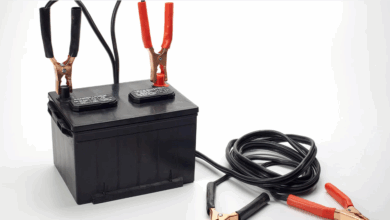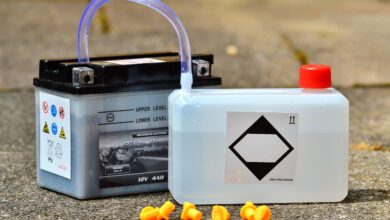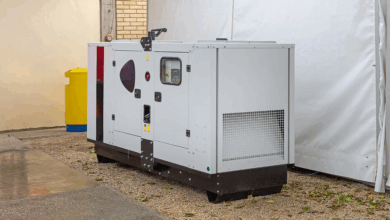The Best Home Generators: Are You Prepared for an Outage?

The Best Home Generators: Are You Prepared for an Outage? Your Guide to Powering Through the Dark
Imagine this: A severe storm rolls through, a grid failure occurs, or even just a local utility issue strikes. Suddenly, the lights flicker and die. Your refrigerator stops humming, the air conditioning (or heat) shuts off, the internet goes dark, and your phone’s battery is dwindling. In today’s connected world, a power outage isn’t just an inconvenience; it can disrupt daily life, compromise safety, and lead to significant losses, from spoiled food to frozen pipes.
Are you prepared for the inevitable moment when the power grid lets you down? For many homeowners, the answer lies in investing in a home generator. But with various types, sizes, and features available, how do you determine what the "best" home generator is for your needs? This article will explore the world of home generators, help you understand your options, and guide you toward making an informed decision to ensure you’re never left in the dark.
Why a Generator is More Than a Convenience
In an age where we rely heavily on electricity for everything from communication and entertainment to heating, cooling, medical equipment, and food preservation, a power outage can quickly escalate from annoyance to emergency.
- Preserving Essentials: A generator can keep your refrigerator and freezer running, saving hundreds of dollars in spoiled food. It can power essential appliances like sump pumps to prevent basement flooding or well pumps for water supply.
- Maintaining Comfort and Safety: In extreme temperatures, power loss can be dangerous. A generator can run your furnace or air conditioner, lights, and even a microwave or coffeemaker, maintaining a habitable and safe environment.
- Keeping Connected: Powering modems, routers, and charging stations ensures you stay connected to emergency services, news updates, and loved ones.
- Medical Needs: For those relying on life-support systems, oxygen concentrators, or refrigerated medications, a generator is not a luxury but a life-saving necessity.
- Security: Keeping your security system, lights, and potentially automatic garage doors operational enhances safety during an outage.
Given these critical functions, a generator isn’t just about watching TV or keeping the lights on; it’s about maintaining safety, security, and the habitability of your home.
Types of Home Generators: Finding Your Match
Home generators primarily fall into two main categories: Portable and Standby. Understanding the differences is the first step in choosing the best fit.
-
Portable Generators:
- What they are: These are the most common and often the most affordable type. They are designed to be moved and require manual setup and starting. They typically run on gasoline, propane, or sometimes diesel.
- How they work: You manually start the engine and plug appliances directly into the generator’s outlets or connect it to your home’s electrical system via a transfer switch (recommended for safety).
- Pros:
- Lower initial cost.
- Portable – can be used in different locations (home, camping, job site).
- Easier to store when not in use.
-
Cons:
- Require manual starting and refueling (can be difficult or dangerous in bad weather or at night).
- Often quite noisy.
- Must be operated outdoors, far from windows and doors, due to carbon monoxide risk.
- Limited power output compared to many standby units.
- Need safe storage for fuel.
- Inverter Generators (A sub-type of Portable): These are newer, more advanced portable generators. They use an inverter to produce cleaner sine wave power, which is safer for sensitive electronics like computers and smartphones. They are typically quieter and more fuel-efficient than traditional portable generators. They usually have a lower wattage output than standard portables of similar size but are an excellent option for powering essential electronics and basic appliances.
- Standby Generators (Automatic/Whole House):
- What they are: These are permanently installed outside your home, much like an air conditioning unit. They are wired directly into your home’s electrical panel via an automatic transfer switch. They typically run on natural gas or propane, connected to your home’s existing supply.
- How they work: The automatic transfer switch constantly monitors utility power. When an outage is detected, it automatically starts the generator within seconds and transfers the home’s electrical load to the generator. When utility power returns, the switch transfers the load back and shuts the generator off.
- Pros:
- Automatic operation – no manual intervention needed, even when you’re away.
- Higher power output – can often power your entire home or a significant portion of it.
- Runs on natural gas or propane (less need for manual refueling, especially with natural gas).
- Significantly quieter than portable generators.
- Permanent installation – no setup required during an emergency.
- Enhanced home value.
- Cons:
- Significantly higher initial cost and professional installation required.
- Not portable.
- Requires regular professional maintenance.
Choosing the "Best" Generator: Key Factors to Consider
There’s no single "best" generator for everyone. The ideal choice depends entirely on your specific needs, budget, and circumstances. Here are the critical factors to evaluate:
-
Sizing (Wattage): This is perhaps the most crucial factor. You need a generator that can supply enough power (watts) for the appliances you need to run simultaneously.
- Running Watts vs. Starting Watts: Appliances with motors (refrigerators, pumps, air conditioners) require a brief surge of power (starting watts) to start up, which is often 2-3 times their running wattage. The generator must handle the highest starting wattage of any single appliance, plus the running wattage of all other connected items.
- How to Figure Out Your Needs: Make a list of essential appliances. Find the running and starting wattage requirements (check appliance labels or manuals). Calculate the total running watts and identify the appliance with the highest starting watts. The generator needs to meet the total running watts PLUS the difference between the highest starting watts and that appliance’s running watts. Online wattage calculators and professional electricians can greatly assist with this.
- Typical Needs: A small portable (1,500-3,000 watts) might power lights and a refrigerator. A medium portable (3,000-7,500 watts) can handle more appliances, maybe a window AC. A large portable or a medium standby (7,500-12,000+ watts) can power a substantial portion of a home. A large standby (15,000+ watts) can often power an entire house.
-
Fuel Type:
- Gasoline: Common, easy to find, but stores poorly (degrades) and requires frequent refueling during long outages.
- Propane: Stores indefinitely, burns cleaner than gasoline, readily available in tanks. Less energy dense than gasoline (burns faster per gallon). Excellent for both portable and standby units.
- Natural Gas: Ideal for standby units connected to a utility line – infinite fuel supply during an outage. Not available everywhere. Less energy dense than propane or gasoline.
- Diesel: Efficient for larger units, good storage life with additives, but fuel can gel in cold weather, and units are often noisy and more expensive.
-
Manual vs. Automatic Operation (Transfer Switch):
- A transfer switch is essential for safely connecting a generator to your home’s electrical system. It prevents "backfeeding" electricity onto the utility lines, which can seriously injure or kill utility workers, and prevents the generator from being damaged when utility power returns.
- Manual Transfer Switch: Requires you to physically flip switches to disconnect from utility power and connect to the generator. Common with portable generators.
- Automatic Transfer Switch (ATS): Detects outages and switches power sources automatically. Standard with standby generators. Offers unparalleled convenience and safety.
-
Noise Level: Measured in decibels (dBA). Portable generators are often loud (65-85+ dBA). Inverter portables and standby generators are generally quieter (50-65 dBA), making them much more neighborhood-friendly during extended use.
-
Budget: Generators range widely in price. Portable generators can cost from a few hundred to a couple of thousand dollars. Standby generators, including installation, can range from $5,000 to $20,000 or more depending on size and complexity.
- Installation and Maintenance: Portable generators require minimal setup but need manual maintenance. Standby generators require professional installation and scheduled maintenance to ensure reliable automatic operation.
Maintenance and Safety: Non-Negotiable Aspects
Owning a generator comes with responsibilities. Proper maintenance ensures it starts when you need it, and strict safety protocols protect your family and neighbors.
- Maintenance: Regularly "exercise" your generator (run it under a load) according to the manufacturer’s instructions (often weekly or monthly). Check oil levels, change oil and filters regularly, inspect spark plugs and air filters. Keep fuel fresh if using gasoline (add stabilizer). Store propane tanks safely.
- Safety:
- Carbon Monoxide (CO) Poisoning: Generators produce deadly CO gas. NEVER run a generator indoors, in a garage, basement, crawlspace, or any partially enclosed area. Operate it outdoors at least 20 feet away from your home, doors, and windows. Point the exhaust away from buildings. Install CO detectors in your home.
- Electrical Safety: Use a properly installed transfer switch to connect to your home’s wiring. If using extension cords, ensure they are heavy-duty, rated for outdoor use, and capable of handling the appliance’s load. Avoid running cords under carpets or through doorways where they can be pinched or damaged.
- Fuel Safety: Store fuel in approved containers in a well-ventilated area away from living spaces, ignition sources, and appliances. Allow the generator to cool completely before refueling.
The "Best" is Preparation
Ultimately, the "best" home generator isn’t a single model or brand; it’s the generator that is the right size for your needs, reliably maintained, safely operated, and part of a larger preparedness plan. Research your options, assess your power requirements carefully, factor in installation and fuel costs, and prioritize safety above all else.
Investing in a home generator provides invaluable peace of mind. It’s not just about weathering the storm; it’s about ensuring the safety, comfort, and security of your home and family when the power goes out. Don’t wait until the next outage to ask yourself, "Are we prepared?"
Home Generator FAQs
-
Q1: How do I know what size generator I need?
- A: List all the essential appliances you need to power during an outage. Find their running watts and starting watts (especially for motor-driven appliances). Calculate the total running watts and the highest single starting watt requirement. Your generator’s running watts should meet the total running watts, and its starting watts should be able to handle the appliance with the highest starting requirement. Consulting an electrician or using online generator sizing calculators is highly recommended.
-
Q2: Can I run my portable generator indoors or in the garage?
- A: ABSOLUTELY NOT. Generators produce deadly carbon monoxide (CO) gas. They must be operated outdoors, at least 20 feet away from your home, doors, and windows, with the exhaust pointed away from structures. Install CO detectors in your home as an extra safety measure.
-
Q3: What is a transfer switch and why do I need one?
- A: A transfer switch is a crucial safety device that isolates your home’s electrical system from the utility grid before connecting the generator. This prevents dangerous "backfeeding" of power onto utility lines (harming workers) and protects your generator when grid power returns. It’s the safe way to connect a generator to your home’s wiring.
-
Q4: Portable vs. Standby – which is better?
- A: It depends on your needs and budget. Portable generators are more affordable and mobile, suitable for powering a few essentials. Standby generators are more expensive but offer automatic operation, higher power output (often whole-house), quieter performance, and run on natural gas/propane for longer durations. Standby offers greater convenience and peace of mind during extended outages.
-
Q5: How long can a generator run?
- A: This depends on the fuel source, fuel capacity, and load. Gasoline portable generators typically run for 6-12 hours on a tank depending on the load. Propane portable generators last longer with larger tanks. Standby generators running on natural gas can potentially run indefinitely as long as the gas supply is active. Propane standby units are limited by the size of the propane tank.
-
Q6: What kind of maintenance do home generators require?
- A: Regular maintenance is vital. This includes periodic "exercising" (running the generator), checking and changing oil and filters, inspecting spark plugs, and ensuring fuel stability (for gasoline). Standby generators often require scheduled professional service.
- Q7: Are generators noisy?
- A: Traditional portable generators can be quite loud (comparable to a lawnmower). Inverter generators and standby generators are generally much quieter, often comparable to an air conditioning unit.
Conclusion
Power outages are an increasingly frequent reality in many areas, driven by aging infrastructure, severe weather, and increasing demand. Being caught unprepared can lead to discomfort, loss, and even danger. A home generator is a powerful tool for preparedness, offering a reliable source of electricity to keep your lights on, your food cold, your essential appliances running, and your family safe and comfortable.
Choosing the "best" generator is a personal journey involving assessing your specific power needs, understanding the different types available, considering fuel options, and factoring in budget and installation requirements. Whether you opt for the flexibility of a portable unit or the seamless reliability of a standby system, the most important step is making an informed decision and taking action before the next storm hits.
Don’t wait for the lights to go out. Evaluate your needs, explore your options, and invest in the power of preparedness. A home generator isn’t just equipment; it’s an investment in peace of mind, ensuring that when the grid fails, your home remains a safe and functioning haven.




![How to Bypass CO Sensor on Generator – [4-Step Safety Guide]](https://www.generator411.com/wp-content/uploads/2025/08/co-sensor-on-generator-390x220.png)